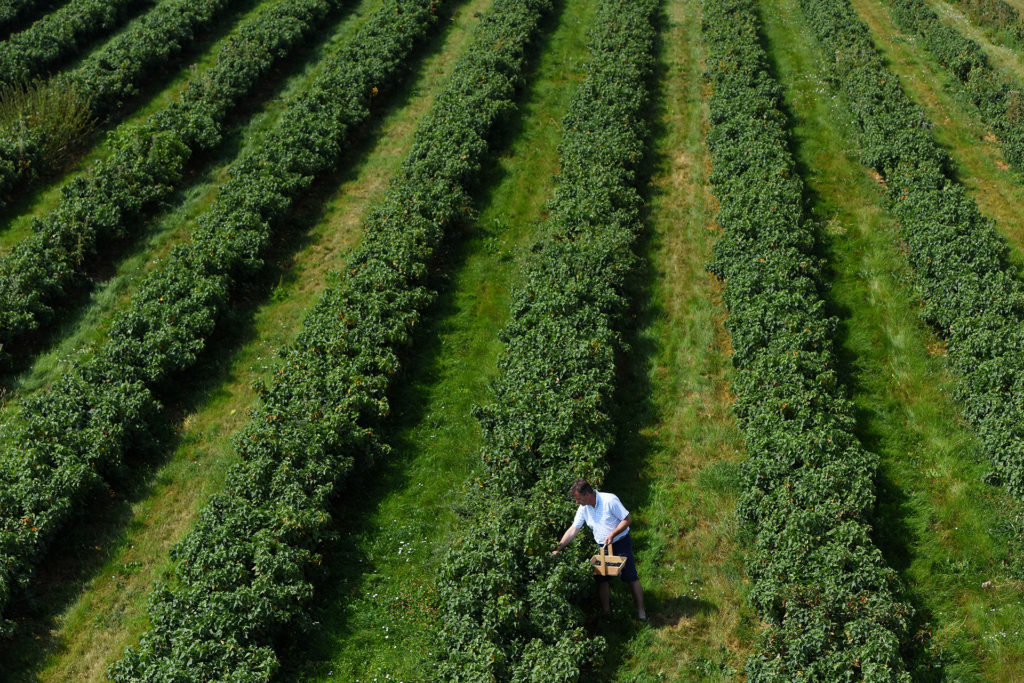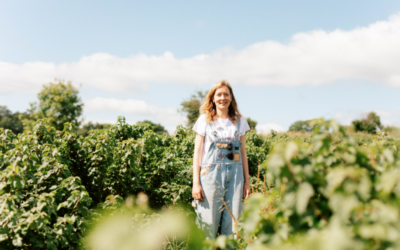6 ways in which we help protect our natural environment and promote biodiversity on our farms

Here at the Blackcurrant Foundation, our 35 growers manage over 5,000 hectares of blackcurrant crop across the length and breadth of the UK. Each year, we produce over 10,000 tonnes of delicious blackcurrants, with the majority used to make the blackcurrant drink we all know and love, Ribena.
Growing sustainably is incredibly important to us farmers, but also for Ribena. That’s why we work with Ribena to grow our crops in line with their Six Point Plan, designed to protect the natural environment and encourage biodiversity on our farms. Here is an outline of the six key methods we practise to achieve this…
- Hedgerows – Our hedgerows play a vital part in our growing process. They provide a natural shelter for our crops, shielding them from wind at a time when they are flowering. They also provide food, shelter and breeding sites for our wildlife. We trim the hedges no more than once in every two years (only in January or February) and ensure food such as berries remain available throughout the winter months.
- Grass Margins – We maintain two-metre wide grass buffers around all boundaries, including hedges, ditches and woodland adjacent to the blackcurrants. These grass margins are a habitat for butterflies and other small creatures to lay their eggs in over winter, and become home to the insects that will feed off crop pests over spring. The buffers also protect the land itself by preventing soil erosion.
- Grass Headlands – We plant grass headlands and keep them as wild as we can, as these areas encourage biodiversity. No mowing here! Similar to the grass margins, these areas are an ideal habitat for wildlife like our friendly bumblebees, and they also make an excellent refuge for brown hares and grey partridges.
- Farmland Birds – We erect nest boxes around the fields with an average of one box per hectare of blackcurrants; this can include bird, bat or owl boxes. By doing this, we can provide shelter and safety from egg predators, allowing our feathered friends to flourish. We keep them maintained throughout the year and love reporting back to Ribena how many visitors we’ve had!
- Wildflowers – We plant a unique mix of wildflowers to enhance non-cropped areas around our blackcurrants, including headlands, field corners, crop alleyways, or hedgerows where pollen and nectar sources are present. The carefully selected mix of flowers including Vetch, Campion and Phaceila support our bee population as well as other essential beasties and natural predators. They help bring us a rich and fruitful crop at harvest time. One of our favourite flowers in the mix is one called ‘yarrow’; this plant stops snails and slugs getting to our blackcurrant bushes.
- Trees – We ensure we have healthy grass buffers planted beneath the canopies of trees on our land and any machine operations are avoided, and any machine operations are avoided. We also maintain young trees or those which have been part of previous conservation plans.
In addition to Ribena’s Six Point Plan, our growers are continually monitoring and testing the land for nutrients, trace elements and organic matter to ensure that it can be improved by correct crop rotation and use of additives, including natural manure.
In a joint mission to leave the land better than it was found, our growers work with Ribena in this way to produce juicy, sweet and rich blackcurrants from well-managed and healthy land – all for our favourite blackcurrant drink!
YOU MAY ALSO WANT TO READ
How to Celebrate Easter with Blackcurrants
Easter, and all the fun that comes with it, is just around the corner - think spring chicks, egg hunts, fields full of bouncy lambs, daffodils and, of course, fabulous feasts cooked on the barbecue whether the sun is shining or not! From delicious seasonal bakes to...
A Year As A Blackcurrant Grower
Looking to grow your own blackcurrants? If so, we’ve broken your blackcurrant-growing journey down into three simple steps and shared our top tips to see you from one start of the year to another… Planting Blackcurrant plants are typically sold as two-year-old bushes,...
A Year in Blackcurrant Recipes
YOU MAY ALSO WANT TO READ Every day’s a great day to enjoy blackcurrants, but we know the kind of dishes that will really hit the spot are those that tie into the seasons. From energy kicks to sweet treats, we’ve rounded up 12 of our blackcurrant recipes to...




